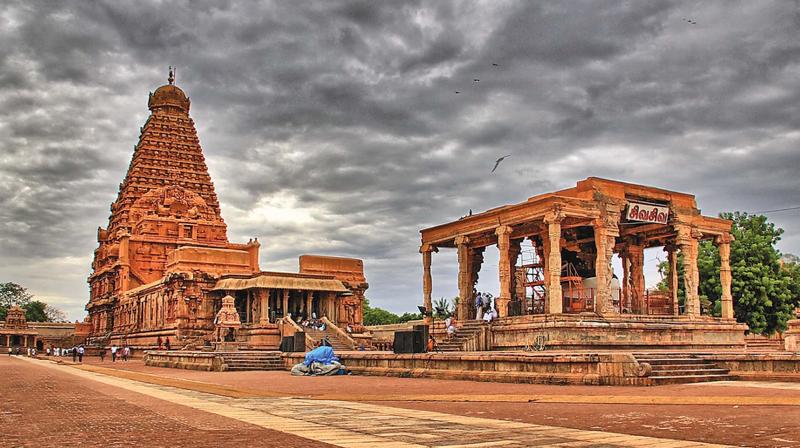14th century Tamil inscription unearthed at Motupalli
Dr E. Sivanagi Reddy, archaeologist, said it was curious to note that the Kakatiyas issued inscriptions in Tamil apart from Telugu

VIJAYAWADA: Tamil inscription of Kakatiya Prataparudra, dated back to 14 century, was discovered at Motupalli. Dr E. Sivanagi Reddy, archaeologist and CEO, Pleach India Foundation, said it was curious to note that the Kakatiyas also issued inscriptions in Tamil language apart from Telugu in coastal Andhra and Telangana.
Dr. Reddy, along with R. Dasaratha Reddy, president, Motupalli Heritage Society, was documenting the dilapidated Kodandarama Swamy temple located on the outskirts of Motupalli, an international port town of the medieval period, while he chanced upon the Tamil inscription. Dr. Reddy said, “Inscription is written in Tamil and Grantha scripts, which is dated back to Saka 1230 (1st August, 1308 C.E), Kilaka, Vaisaka, Su. 10, Wednesday, pertaining to the reign of Kakatiya Rudra Deva II (1289-1323). It registers the gift of land as Tiruvidaiyattam for providing offerings to Lord Rajanarayana Perumal in Desi-uyyakondan-pattinam alias Motupalli by Cattanthai- Cemmanadiyal-Valumpothalakiyan alias Patinenbhumi-vanikaratittan, for the merit of the king.”
Dr Reddy said Dr K. Muniratnam Reddy, director, epigraphy branch, Archaeological Survey of India, Mysuru, who deciphered 813-year-old Tamil Grandha script and revealed the content of historical importance. He stated it was interesting to note that Motupalli was mentioned as ‘Desi Uyyakondapatnam’ and the inscription slab was fitted into the west side wall of the temple during the 16th century.
Dr Reddy explained that the gift of land was given to conduct Tiruvidaiyattam festival in the temple of Rajanarayana Perumal for the merit of the last Kakatiya emperor, Prataparudra. He further said the inscription got significance as it was the second and next to one more Tamil inscription found at Motupalli issued by Kakatiya Ganapatideva dated to 1244 AD known as the Abhaya Sasana, a charter that ensured the life and goods of the sea-borne trade.
Dr Reddy sensitised the local people on the historical significance of the inscription and appealed to the state government to protect the inscription for posterity.

